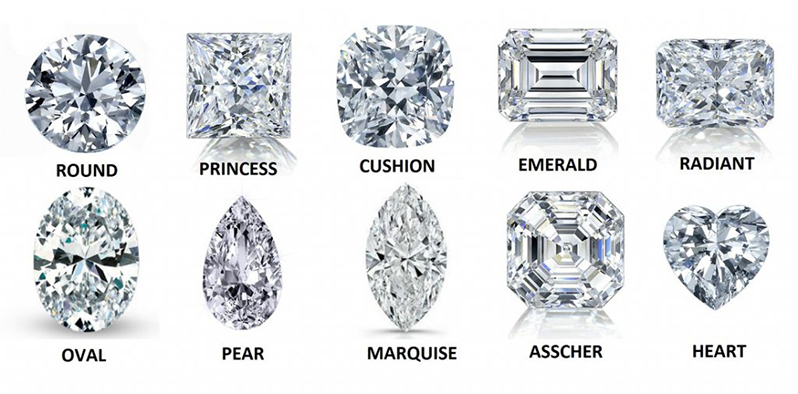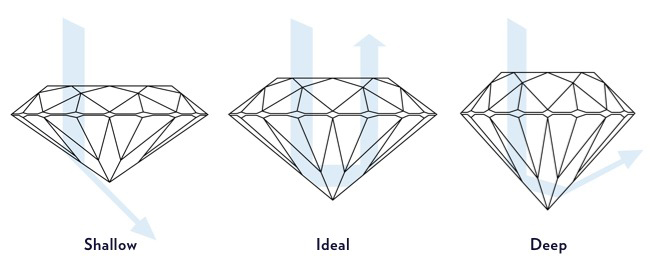Diamond Education
Shape
Diamonds can be cut in many different shapes, each having its own unique qualities. Given that shape is mostly a matter of taste, it is essential to identify with the attributes of each so that you make the right choice while purchasing. Majority of people perceive the classic diamond, as a round gem that has a fiery sparkling white brilliance and dazzling facets which allure the eye.

Color
While the jeweler talks about the diamonds color, he is referring to the absence and presence of the color in the diamond. Color of a diamond is a result of diamond’s composition and does not change with time. Colorless diamonds allow light to travel through them as compared to the colored diamonds. These diamonds also emit more fire and sparkle. The process, through which a diamond is formed, is the deciding factor for its color. The whiter the diamond is the higher value it will have.

Cut
Diamonds are known for their ability to transmit light and sparkle so intensely. We often think of a diamond’s cut as shape (round, emerald, pear), but a diamond’s cut grade is really about how well a diamond’s facets interact with light. Precise artistry and workmanship are required to fashion a stone so its proportions, symmetry, and polish deliver the magnificent return of light only possible in a diamond.

Clarity
A diamonds clarity grade is determined by the size, location, color, type and quantity of internal inclusions or external blemishes. Clarity grades begin at Internally Flawless and move towards I3 as these unique characteristics become more noticeable. Higher clarity grades are rarer and therefore more valuable.
The following is the Gemological Institute of America’s (GIA) system of grading clarity:
Flawless (FL) – No inclusions or blemishes are visible to a skilled grader using 10× magnification
Internally Flawless (IF) – No inclusions and only blemishes are visible to a skilled grader using 10× magnification
Very, Very Slightly Included (VVS1 and VVS2) – Inclusions are difficult for a skilled grader to see under 10× magnification
Very Slightly Included (VS1 and VS2) – Inclusions are clearly visible under 10× magnification but can be characterized as minor
Slightly Included (SI1 and SI2) – Inclusions are noticeable to a skilled grader using 10× magnification
Included (I1, I2, and I3) – Inclusions are obvious under 10× magnification and may affect transparency and brilliance

